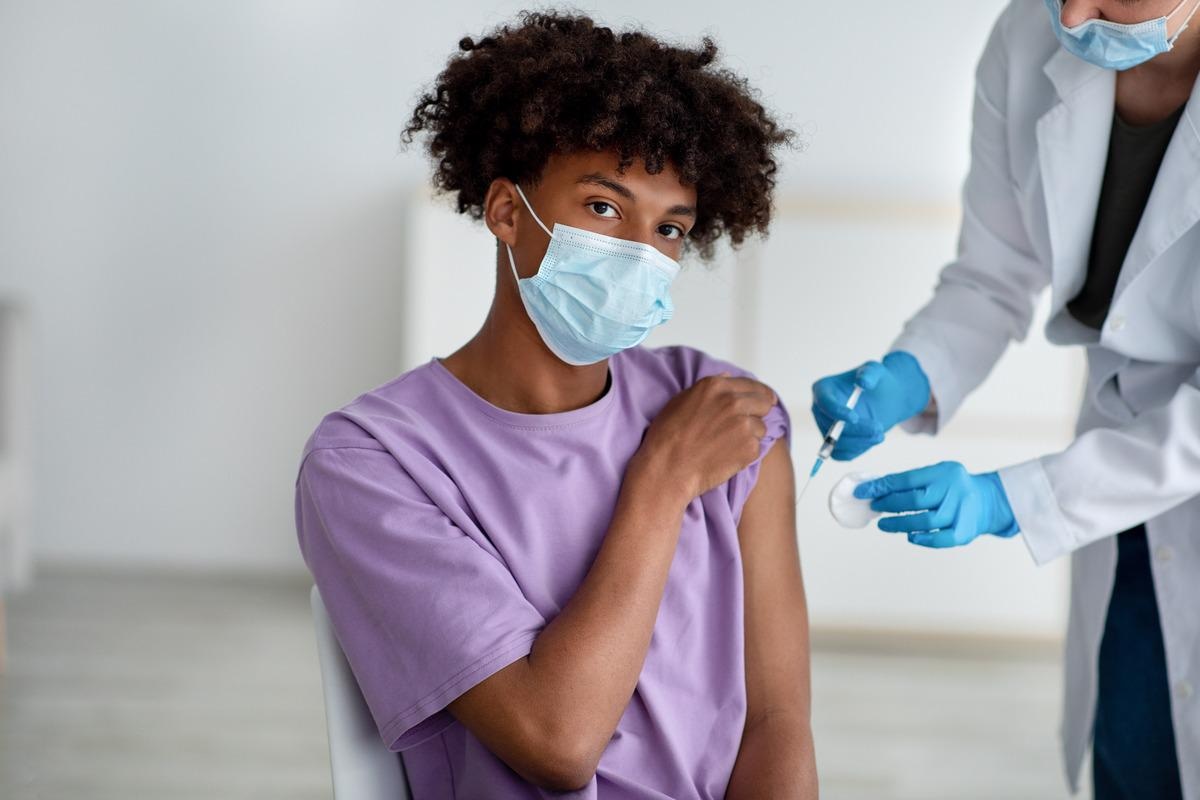A recent study posted to the Research Square* preprint server and under consideration at a Nature Journal Portfolio Journal assessed the reactogenicity and immunogenicity induced by severe acute respiratory syndrome coronavirus 2 (SARS-CoV-2) vaccines in adolescent individuals.

Background
The coronavirus disease 2019 (COVID-19) pandemic has caused widespread morbidity and mortality worldwide. While fewer COVID-19-related hospitalizations have been observed in adults compared to the younger populations, there are many emerging reports suggesting disease complications in the latter groups. However, while extensive vaccine-related studies exist in adult populations, there is a significant lack of the same for adolescent groups.
About the study
The present study assessed the cellular and humoral immunogenicity in adolescents after the administration of one and two doses of the BNT162b2 messenger ribonucleic acid (mRNA) vaccines and after two doses of CoronaVac.
The study included children aged between 11 to 17 years and adults aged 18 years and older recruited from schools across Hong Kong. Eligible participants were healthy or in a stable health condition, while individuals with previous COVID-19 infections, severe neuropsychiatric conditions, immunocompromised immunity, and hemophilia were excluded from the study.
Peripheral blood was collected from each eligible participant before each vaccine dose, four weeks post the second dose B (BB), and second dose C (CC). Vaccines BNT162b2 (B) and CoronaVac (C) were administered 21 to 28 days and 28 to 35 days apart, respectively. The presence or absence of pre-specified adverse reactions (ARs) was recorded for seven days after administration, while adverse effects (AEs) were reported for up to 28 days. Severe adverse events (SAEs) would be followed up for three years.
The serum obtained from the collected peripheral blood was analyzed by enzyme-linked immunosorbent assay (ELISA) for the presence of immunoglobulin G (IgG) enzyme on the SARS-CoV-2 spike (S) receptor-binding domain (S-RBD). This was followed by a plaque reduction neutralization test (PRNT) and a surrogate virus neutralization test (sVNT). T cell responses were also analyzed by isolating peripheral blood mononuclear cells (PBMCs).
Results
The study results showed that a total of 527 participants were enrolled from 27 April 2021 to 23 October 2021, among which 239 were adolescents, and 288 were adults of median ages 14 and 47.5 years, respectively. All the participants had received two doses of either BNT162b2 (BB) or CoronaVac (CC).
In the analysis of humoral immunogenicity induced by one dose of BNT162b2 (B), it was noted that 100% seroconversion of S-RBD IgG was achieved. Also, sVNT inhibition and geometric mean (GM) optical density-450 (OD450) of 81.3% and 1.96 were observed on day 21 post the first dose, and 97.1% and 2.64 on day 28 after the second dose administration of BNT162b2, respectively. After the administration of two doses of CoronaVac, 96.6% of the recipients had positive S-RBD IgG with 71.2% sVNT inhibition and GM OD450 value of 1.20.
After CC and BB administration, GM for 90% PRNT (PRNT90) was 9.58 and 115, while GM for PRNT50 was 28 and 331, respectively. Secondary immunogenicity outcomes of the nucleocapsid (N)-C-terminal domain (N-CTD) IgG and SARS-CoV-2 N-IgG in adolescent CC were 92.2% and 98.4%, while GM OD450 was 2.09 and 1.72, respectively. On the other hand, for adult CC, N-CTD IgG and N IgG were 28.6% and 52.4%, with a GM OD450 of 0.92 and 0.77, respectively.
Humoral responses for BB and CC in adolescents were non-inferior compared to adults when evaluated by S IgG, S-RBD IgG, sVNT, PRNT90, and PRNT50. Only a few adults with CC administration were seroconverted for N-CTD IgG and N IgG and were hence non-inferior to adolescent CC.
Concerning T cell responses, over 70% of adolescents who had received either of the vaccines showed a detectable response for S-specific interferon-Ɣ (IFN-Ɣ) CD4+ and interleukin-2 (IL-2) CD4+ 28 days post the second doses. At the same time, S-specific IFN-Ɣ CD8+ and IL-2 CD8+ were found in almost half of adolescents who had received both doses of either vaccine.
Comparisons between BNT162b2 and CoronaVac showed that CC induced lower humoral reactions than BB. However, no significant differences were observed in the cellular immunogenicity outcomes except S-specific IL-2 CD4+ was lesser than for CC 28 days after the administration of the two vaccine doses.
Conclusion
The study findings showed that vaccination with BNT162b2 and CoronaVac elicited efficient immune responses and provided sufficient protection to the host against COVID-19 in adolescents. The researchers believe that more extensive investigations of the humoral responses based on the S- and non-S-specific antibodies produced against SARS-CoV-2 and its variants need to be conducted.
*Important notice
Research Square publishes preliminary scientific reports that are not peer-reviewed and, therefore, should not be regarded as conclusive, guide clinical practice/health-related behavior, or treated as established information.
-
Lau, Y. et al. (2022) "Immunogenicity and reactogenicity of SARS-CoV-2 mRNA and inactivated vaccines in healthy adolescents". Research Square. doi: 10.21203/rs.3.rs-1327020/v1. https://www.researchsquare.com/article/rs-1327020/v1
Posted in: Medical Science News | Medical Research News | Disease/Infection News
Tags: Adolescents, Antibodies, Assay, Blood, Cell, Children, Coronavirus, Coronavirus Disease COVID-19, covid-19, Enzyme, Hemophilia, immunity, Immunoglobulin, Interferon, Interleukin, Interleukin-2, Mortality, Pandemic, Receptor, Research, Respiratory, Ribonucleic Acid, SARS, SARS-CoV-2, Severe Acute Respiratory, Severe Acute Respiratory Syndrome, Syndrome, Vaccine, Virus

Written by
Bhavana Kunkalikar
Bhavana Kunkalikar is a medical writer based in Goa, India. Her academic background is in Pharmaceutical sciences and she holds a Bachelor's degree in Pharmacy. Her educational background allowed her to foster an interest in anatomical and physiological sciences. Her college project work based on ‘The manifestations and causes of sickle cell anemia’ formed the stepping stone to a life-long fascination with human pathophysiology.
Source: Read Full Article